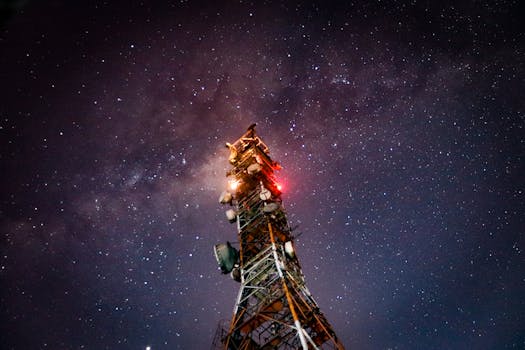
Starlink: Revolutionizing Global Internet Connectivity with Satellite Technology
Starlink, the Focus Keyword, is a revolutionary satellite constellation developed by SpaceX, founded by Elon Musk, with the ambitious goal of providing high-speed, low-latency internet connectivity to the entire world. This innovative technology aims to bridge the digital divide, connecting underserved and remote communities, and transforming the way we communicate, access information, and conduct business.
The concept of Starlink was first announced in 2015, and since then, SpaceX has been working tirelessly to launch a network of low-Earth orbit (LEO) satellites that will provide fast and reliable internet services. The satellite constellation is designed to consist of nearly 42,000 satellites, each weighing around 260 kilograms, which will be launched into orbit over the next few years. The first batch of 60 satellites was launched in May 2019, marking the beginning of this exciting journey.
How Starlink Works
Starlink uses a complex system of satellites, ground stations, and user terminals to provide internet connectivity. The satellites are equipped with advanced technology, including Hall effect thrusters, Starlink-specific antennae, and a sophisticated navigation system. The user terminals, which are small, compact devices, are used to connect to the satellites, providing a high-speed internet connection. The ground stations, located around the world, are used to control and monitor the satellite constellation, ensuring seamless communication and data transfer.
The Starlink system operates on the Ka- and Ku-bands, which provide high-frequency bands for data transmission. The satellites use a phased array antenna to steer and shape the beam, allowing for efficient data transfer and minimizing interference. The system also employs advanced beamforming and beam-steering techniques, enabling the satellites to dynamically adjust their beams to optimize performance and coverage.
Benefits and Impact of Starlink
The potential benefits and impact of Starlink are vast and far-reaching. By providing high-speed, low-latency internet connectivity, Starlink can bridge the digital divide, connecting millions of people in underserved and remote communities around the world. This can have a significant impact on education, healthcare, economy, and overall quality of life. Starlink can also provide critical communication services during natural disasters, emergencies, and other crisis situations, when traditional communication infrastructure is damaged or destroyed.
Furthermore, Starlink has the potential to revolutionize the way we conduct business, access information, and communicate. With fast and reliable internet connectivity, remote workers can stay connected and productive, regardless of their location. Online education and training programs can reach a wider audience, and e-commerce and digital payments can flourish, even in the most remote areas.
Challenges and Limitations
While Starlink has the potential to transform the world, there are also challenges and limitations that need to be addressed. One of the main concerns is the high cost of launching and maintaining the satellite constellation. SpaceX has estimated that the total cost of the project will be around $10 billion, which is a significant investment. Additionally, there are regulatory and licensing issues that need to be resolved, as well as concerns about space debris and the environmental impact of the satellites.
Another challenge is the potential for interference with other satellite systems and astronomical observations. The FCC has already approved SpaceX’s request to operate the Starlink constellation, but there are still concerns about the potential impact on other users of the radio frequency spectrum. Moreover, the high number of satellites in the constellation can cause problems for astronomers, who rely on clear skies to observe the universe.
Conclusion
In conclusion, Starlink is a groundbreaking technology that has the potential to revolutionize the way we communicate, access information, and conduct business. While there are challenges and limitations that need to be addressed, the benefits and impact of Starlink are undeniable. As the world becomes increasingly interconnected, Starlink can play a critical role in bridging the digital divide, connecting underserved and remote communities, and transforming the global economy.






